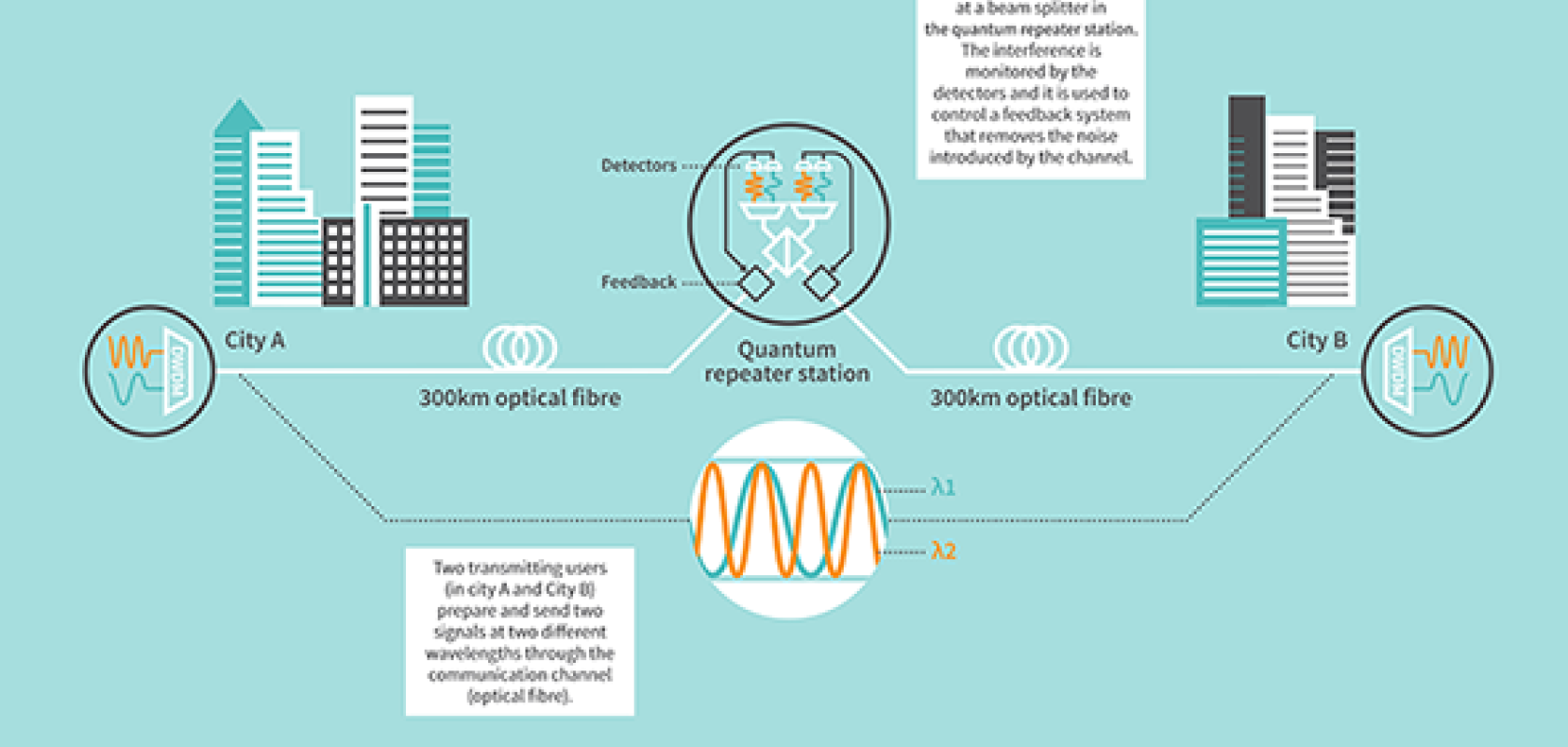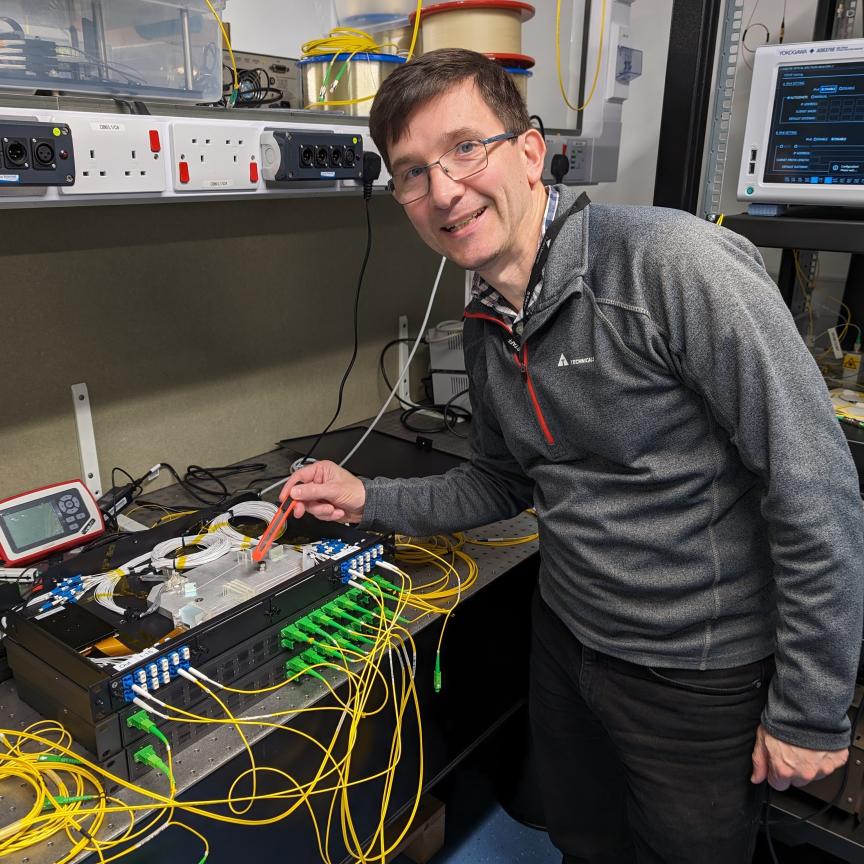A team of researchers at The Cambridge Research Laboratory of Toshiba Europe have demonstrated quantum communications over 600km of optical fibres.
The breakthrough will enable long distance quantum-secured information transfer between metropolitan areas and is thought to be a major advance towards building the future quantum internet.
Toshiba’s team demonstrated these record distances for quantum communications by introducing a novel ‘dual band’ stabilisation technique to help with the issue of transmitting quantum bits over long optical fibres, which can be problematic. This is because small changes in ambient conditions, such as temperature, can cause the fibres to expand and contract, and so scramble the fragile qubits, which are encoded as a phase delay of a weak optical pulse in the fibre.
The dual band technique allows two optical reference signals to be sent, at different wavelengths, to help minimise the phase fluctuations on long fibres. The first wavelength is used to cancel the rapidly varying fluctuations, while the second, at the same wavelength as the optical qubits, is used for fine adjustment of the phase.
After deploying these new techniques, Toshiba found it is possible to hold the optical phase of a quantum signal constant to within a fraction of a wavelength, with a precision of 10s of nanometers, even after propagation through hundreds of kilometres of fibre.
Details of the research were published in the Nature Photonics journal. The project was partially funded by the EU through the H2020 project, OpenQKD. It was also undertaken in collaboration with Corning, as the supplier of the SMF-28 ULL fibre used in the study. The team is now engineering the proposed solutions to simplify their future adoption and deployment.
The first application for dual band stabilisation will be for long distance Quantum Key Distribution (QKD). Commercial QKD systems are currently limited to around 100-200km of fibre. In 2018, Toshiba proposed the Twin Field QKD protocol as a way to extend the distance, and tested its resilience to optical loss using short fibres and attenuators. By introducing the dual band stabilisation technique, Toshiba has now implemented Twin Field QKD on long fibres and demonstrated QKD over 600km, for the first time.
Andrew Shields, head of the quantum technology division at Toshiba Europe explained: ‘QKD has been used to secure metropolitan area networks in recent years. This latest advance extends the maximum span of a quantum link, so that it is possible to connect cities across countries and continents, without using trusted intermediate nodes. Implemented along with Satellite QKD, it will allow us to build a global network for quantum secured communications.’
Taro Shimada, corporate senior vice president and chief digital officer of Toshiba Corporation added: ‘With this success in quantum technology, Toshiba is willing to further expand its quantum business with rapid speed. Our vision is a platform for quantum information technology services, which will not only enable secure communication on a global scale, but also transformational technologies such as cloud-based quantum computing and distributed quantum sensing.’


